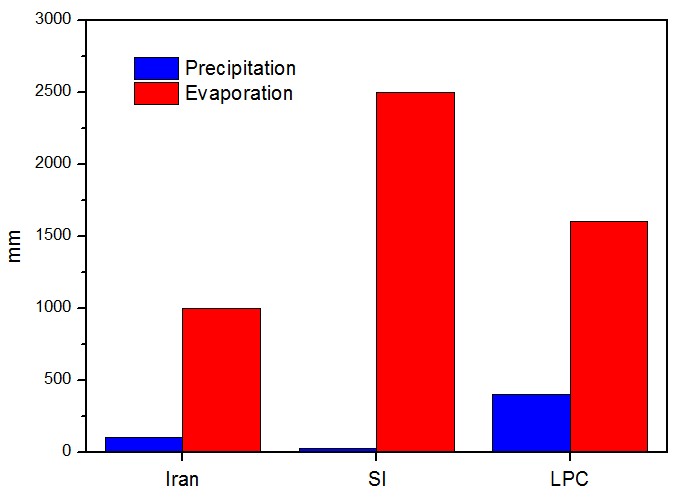The suggested approach would be to remove soil from the higher hills, the ridges of which would be flattened in the process, and to push the soil into the gullies, compacting it to make it less susceptible to tunneling and subsidence, and ultimately to level the surface to create flat or gently sloping fields. Afterward, the new topsoil should be cultivated to make it suitable for crop growth. This measure of filling gullies, firstly, would eliminate the “potential energy difference” and save water; secondly, filling gullies to create farmland would increase the area of cultivable land and alleviate food security and thirdly, filling gullies would reduce disasters. The authors propose to reclaim cropland by filling gullies to sustainably control and make full use of the resources on the Loess Plateau.

Figure 1 Comparison of precipitation and evaporation among Iran, South Israel (SI) and the Loess Plateau of China (LPC). (Figure by IEECAS)
Paper Link:
 © 2015 Institute of Earth Environment,CAS
© 2015 Institute of Earth Environment,CAS Address:No. 97 Yanxiang Road, Xi'an 710061, Shaanxi, China

 Location :
Location :